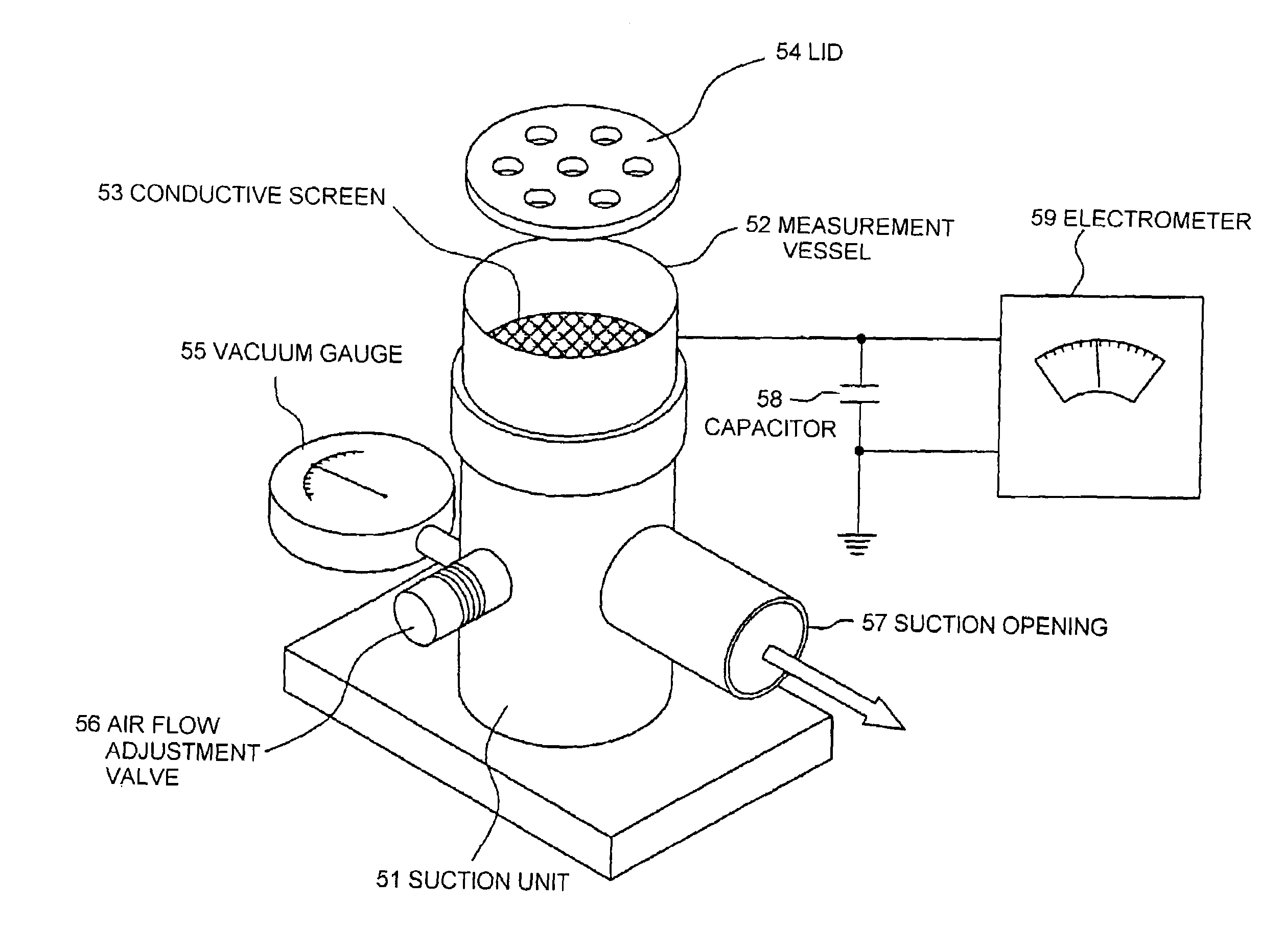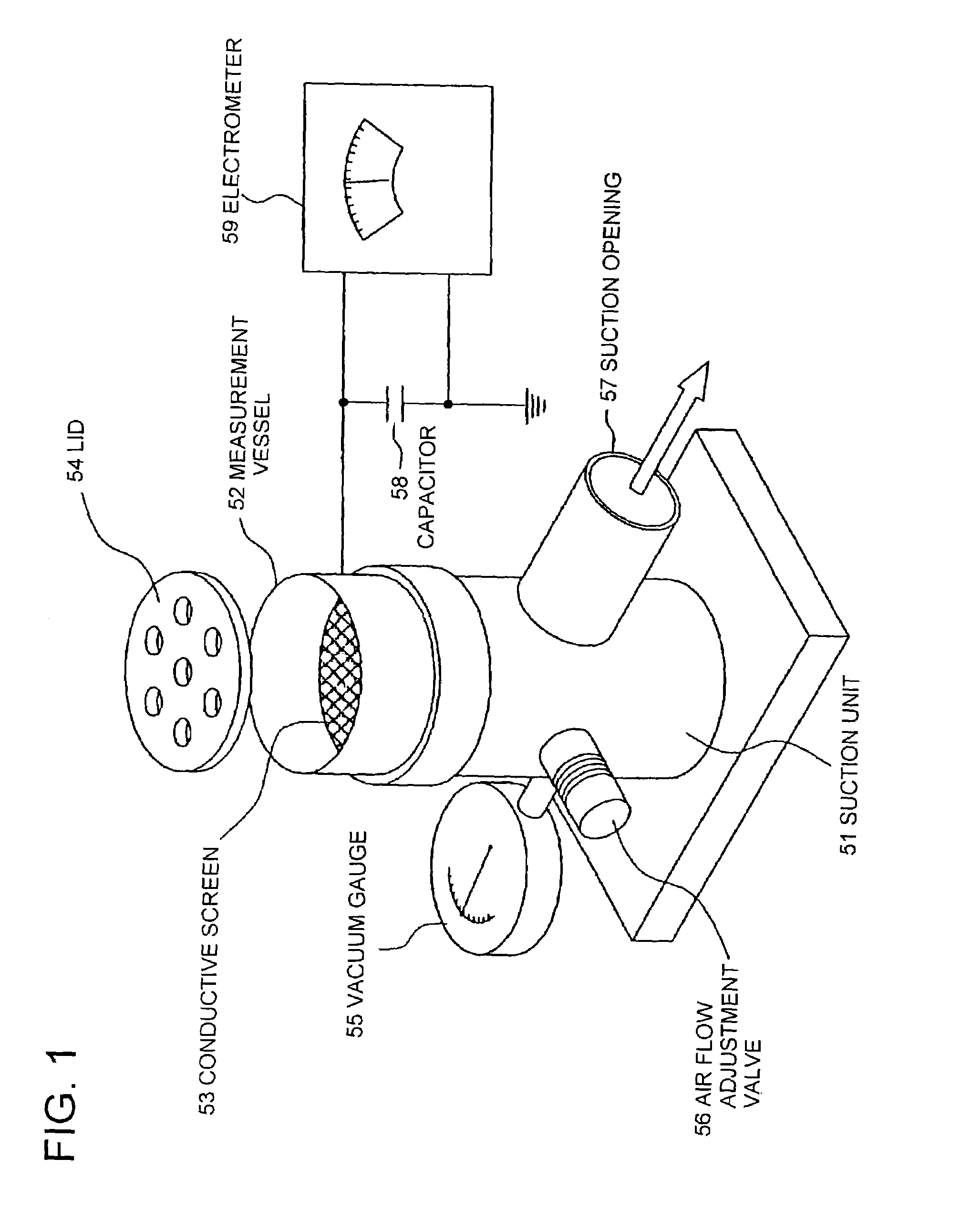Master batch and toner for use in electrophotography
a technology for electrophotography and toner, applied in the field of master batch and toner for use in electrophotography, can solve the problems of partial reduction of the electric resistance of toner, variation of image characteristics, and generation of image deterioration including fogging and toner scattering, so as to maintain satisfactory image characteristics, improve concealment properties, and improve image density
- Summary
- Abstract
- Description
- Claims
- Application Information
AI Technical Summary
Benefits of technology
Problems solved by technology
Method used
Image
Examples
production example 1
[0132]By means of a supermixer, 50 parts by weight of a polyester resin and 50 parts by weight of a carbon black, having such physical properties that the primary particle size was 40 nm and the DBP oil absorption was 100 ml / 100 g, were mixed together homogeneously, and then the mixture thus obtained was melt-kneaded by means of a twin screw extruder to yield a master batch 1.
[0133]The lightness L*, reflectance A at 400 nm and reflectance B at 700 nm of the master batch 1 were measured by means of a CM-3500d manufactured by Minolta Co., Ltd., and the B / A and |B−A| / A values were derived.
[0134]Consequently, satisfactory optical characteristics were found to be exhibited.
production example 2
[0135]A master batch 2 was obtained in a manner similar to that in Production Example 1 except that the melt-kneading conditions were varied.
[0136]Additionally, in a manner similar to that in Production Example 1, the lightness L*, reflectance A at 400 nm and reflectance B at 700 nm of the master batch 2 were measured, and the B / A and |B−A| / A values were derived.
[0137]Consequently, satisfactory optical characteristics were found to be exhibited.
production example 3
[0138]A master batch 3 was obtained in a manner similar to that in Production Example 1 except that the melt-kneading conditions were varied.
[0139]Additionally, in a manner similar to that in Production Example 1, the lightness L*, reflectance A at 400 nm and reflectance B at 700 nm of the master batch 3 were measured, and the B / A and |B−A| / A values were derived.
[0140]Consequently, satisfactory optical characteristics were found to be exhibited, although slightly inferior to the optical characteristics found in Production Examples 1 and 2.
PUM
| Property | Measurement | Unit |
|---|---|---|
| particle size | aaaaa | aaaaa |
| volume average particle size | aaaaa | aaaaa |
| particle size | aaaaa | aaaaa |
Abstract
Description
Claims
Application Information
 Login to View More
Login to View More - R&D
- Intellectual Property
- Life Sciences
- Materials
- Tech Scout
- Unparalleled Data Quality
- Higher Quality Content
- 60% Fewer Hallucinations
Browse by: Latest US Patents, China's latest patents, Technical Efficacy Thesaurus, Application Domain, Technology Topic, Popular Technical Reports.
© 2025 PatSnap. All rights reserved.Legal|Privacy policy|Modern Slavery Act Transparency Statement|Sitemap|About US| Contact US: help@patsnap.com


